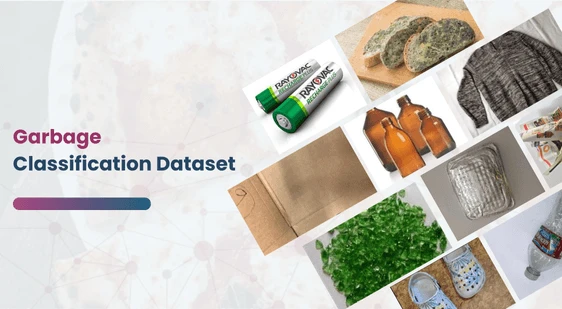Garbage Classification Dataset
Home » Dataset Download » Garbage Classification Dataset
Garbage Classification Dataset
Datasets
Garbage Classification Dataset
File
Garbage Classification Dataset
Use Case
Garbage Classification Dataset
Description
Explore the Garbage Classification Dataset with 15,150 images across 12 categories, designed to improve recycling processes.

Description:
This dataset contains a collection of 15,150 images, categorized into 12 distinct classes of common household waste. The classes include paper, cardboard, biological waste, metal, plastic, green glass, brown glass, white glass, clothing, shoes, batteries, and general trash. Each category represents a different type of material, contributing to more effective recycling and waste management strategies.
Objective
The purpose of this dataset is to aid in the development of machine learning models designed to automatically classify household waste into its appropriate categories, thus promoting more efficient recycling processes. Proper waste sorting is crucial for maximizing the amount of material that can be recycled, and this dataset is aimed at enhancing automation in this area. The classification of garbage into a broader range of categories, as opposed to the limited classes found in most available datasets (2-6 classes), allows for a more precise recycling process and could significantly improve recycling rates.
Download Dataset
Dataset Composition and Collection Process
The dataset was primarily collected through web scraping, as simulating a real-world garbage collection scenario (such as placing a camera above a conveyor belt) was not feasible at the time of collection. The goal was to obtain images that closely resemble actual garbage. For example, images in the biological waste category include rotten fruits, vegetables, and food remnants. Similarly, categories such as glass and metal consist of images of bottles, cans, and containers typically found in household trash. While the images for some categories, like clothes or shoes, were harder to find specifically as garbage, they still represent the items that may end up in waste streams.
In an ideal setting, a conveyor system could be used to gather real-time data by capturing images of waste in a continuous flow. Such a setup would enhance the dataset by providing authentic waste images for all categories. However, until that setup is available, this dataset serves as a significant step toward automating garbage classification and improving recycling technologies.
Potential for Future Improvements
While this dataset provides a strong foundation for household waste classification, there is potential for further improvements. For example, real-time data collection using conveyor systems or garbage processing plants could provide higher accuracy and more contextual images. Additionally, future datasets could expand to include more specialized categories, such as electronic waste, hazardous materials, or specific types of plastic.
Conclusion
The Garbage Classification dataset offers a broad and diverse collection of household waste images, making it a valuable resource for researchers and developers working in environmental sustainability, machine learning, and recycling automation. By improving the accuracy of waste classification systems, we can contribute to a cleaner, more sustainable future.
This dataset is sourced from Kaggle.
Contact Us

Quality Data Creation

Guaranteed TAT

ISO 9001:2015, ISO/IEC 27001:2013 Certified

HIPAA Compliance

GDPR Compliance

Compliance and Security
Let's Discuss your Data collection Requirement With Us
To get a detailed estimation of requirements please reach us.
